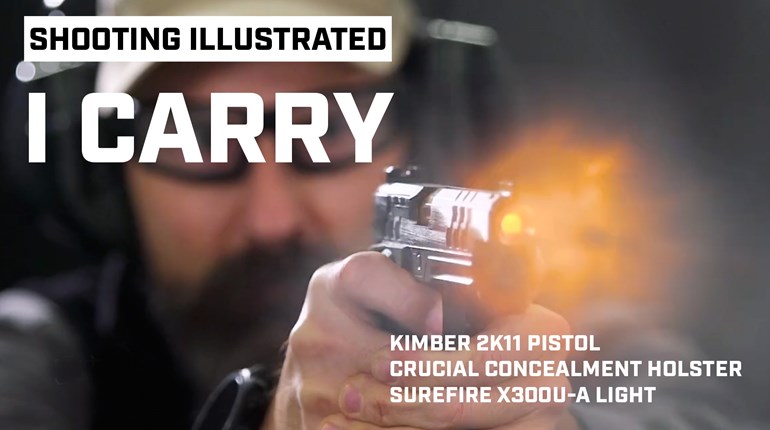
The leading edge of tactical fashion has moved from customized 1911s to tricked-out Glocks to double-stack SAO pistols.
Return with us to the thrilling days of yesteryear—or at least the late 1980s and early 1990s.
The military had transitioned to the Beretta M9 as its general-issue sidearm, and law enforcement agencies at the federal, state and local levels were finishing up their moves away from revolvers to semi-automatic pistols.
However, the influence of Jeff Cooper and the Gospel of Gunsite was strong in the land. Sure, the rank-and-file might get issued a Beretta or a Glock, but the go-to handgun for cool guys, whether go-fast units in the military, specialized LE tactical teams or regular private-citizen toters who considered themselves connoisseurs of the sidearm was the 1911, carried cocked and locked.
Not just any old G.I.-type 1911, either; they tended to be accurized, with fitted barrels, bushings and slides, and had lockwork that had been massaged by a pistolsmith for a crisp and consistent trigger pull.
As time went by, various 1911 makers realized that the halo effects of these high-speed customers helped sell mass-produced clone copies. Kimber moved a bunch of TLE and Warrior pistols based on its association with LAPD SWAT and elite Marine units, and Springfield Armory’s Professional model made for FBI SWAT got a bunch of TRP models into customers’ hands.
The funny thing is, at about the time all this interest in high-end fightin’ 1911s was peaking among the gun-buying public, their actual use by the operators in question was waning.
Under the influence of lessons learned from high-end competitive shooters, the round counts expended in training by Special Ops units was soaring. Lots of shooting breaks guns. Having a gun deadlined stateside is one thing, but various low-intensity conflicts kicked off in this time period, too, and having Sergeant Snuffy’s sidearm bite the dust somewhere out beyond the Pillars of Hercules—when even replacing the barrel is not a drop-in procedure—takes some of the shine off having a special go-fast pistol.
At the very time when people like me were happily holstering Springfield Armory Professionals or Kimber Desert Warriors, the people for whom they’d originally been designed were then switching back to Glock pistols en masse.
Ah, but then—something happened.
Gun guys are gun guys, even when they have operator beards and tattoos, and gun guys like fiddling with their stuff. Hot-rodding a gun to make it cooler and work better probably happened to the very first slow-match-fired handgonne in medieval times, and not even the most steely eyed ninjas could resist making Glocks better. It started with night sights and maybe adding an extended mag release from one of Glock’s competition models, slightly rounded on the corners to make it “tactical,” sure, but that’s not where it stayed.
People were fiddling with combinations of disconnectors and trigger-return springs to get the best trigger pull, fitting aftermarket barrels to improve accuracy, removing the finger grooves from the Gen3 Glock grip to improve the ergonomics. Before you knew it, the world of go-fast Glocks was full of extended barrels, aftermarket triggers, compensators—the works.
If someone showed up at a class or match in 2015 and wanted the state-of-the-art in cool-kid Glocks, it’d be something along the lines of what was called a “Roland Special.” It would have an extended barrel fitted with an expansion-chamber comp, a Trijicon RMR on the slide, probably a heavily massaged fire-control group with an aftermarket trigger shoe. It might have the frame textured and recontoured by Boresight Solutions or else Bowie Customs, and maybe the slide lightened with milling cuts that let a gold-TiN barrel peek out.
And the owner of that pistol would be participating in online forum discussions at Pistol-Forum or Primary & Secondary, trying to figure out which loads ran reliably in this compensated custom gun, an ex-Glock into which they’d sunk a $1,000 or more’s worth of modifications. What was the best recoil-spring weight? Who was selling the best aftermarket triggers?
It was at SHOT Show in 2018 that I was walking the floor, hanging out with Tim Herron, USPSA Grand Master and wizard of shooting single-stack 1911s, and we wound up in the booth of what was still, in those days, STI Inc. (now Staccato), when it hit me.
I was looking at one of the manufacturer’s double-stack 2011 offerings in 9 mm, with a built-in compensator and factory cut for a slide-mount MRDS—I think it was called the DVC Omni. I got all excited and started babbling to Herron that this was it! This was the next fad!
If dudes were going to spend kilobucks—sometimes multiple kilobucks—making churched-up Glocks full of aftermarket go-fast parts, why not just skip the middleman and go straight to a 9 mm 2011 from the jump?
I’m glad I didn’t just mumble that to myself and got it down on paper, because here we are in 2022 and all kinds of LE outfits, from U.S. Marshals SOG to LAPD Metro, are using Staccatos, to say nothing of celebrity shooters, not only on the internets, but also on the silver screen.
Further, Springfield Armory has noticed it’s raining 9 mm 2011 soup and it stuck a bowl out the window in the form of its new double-stack Prodigy offering.
All of a sudden, the tacticool corners of the internet—a place where you couldn’t mention anything hammer-fired or with a manual safety for the last dozen years without getting hounded out of the room as a “Fudd”—are alive with, well, let’s call it big 2011 energy.
For those of us who’ve nonetheless been keeping our thumb-safety skills sharp for the last decade, just in case, this feels like vindication.



































